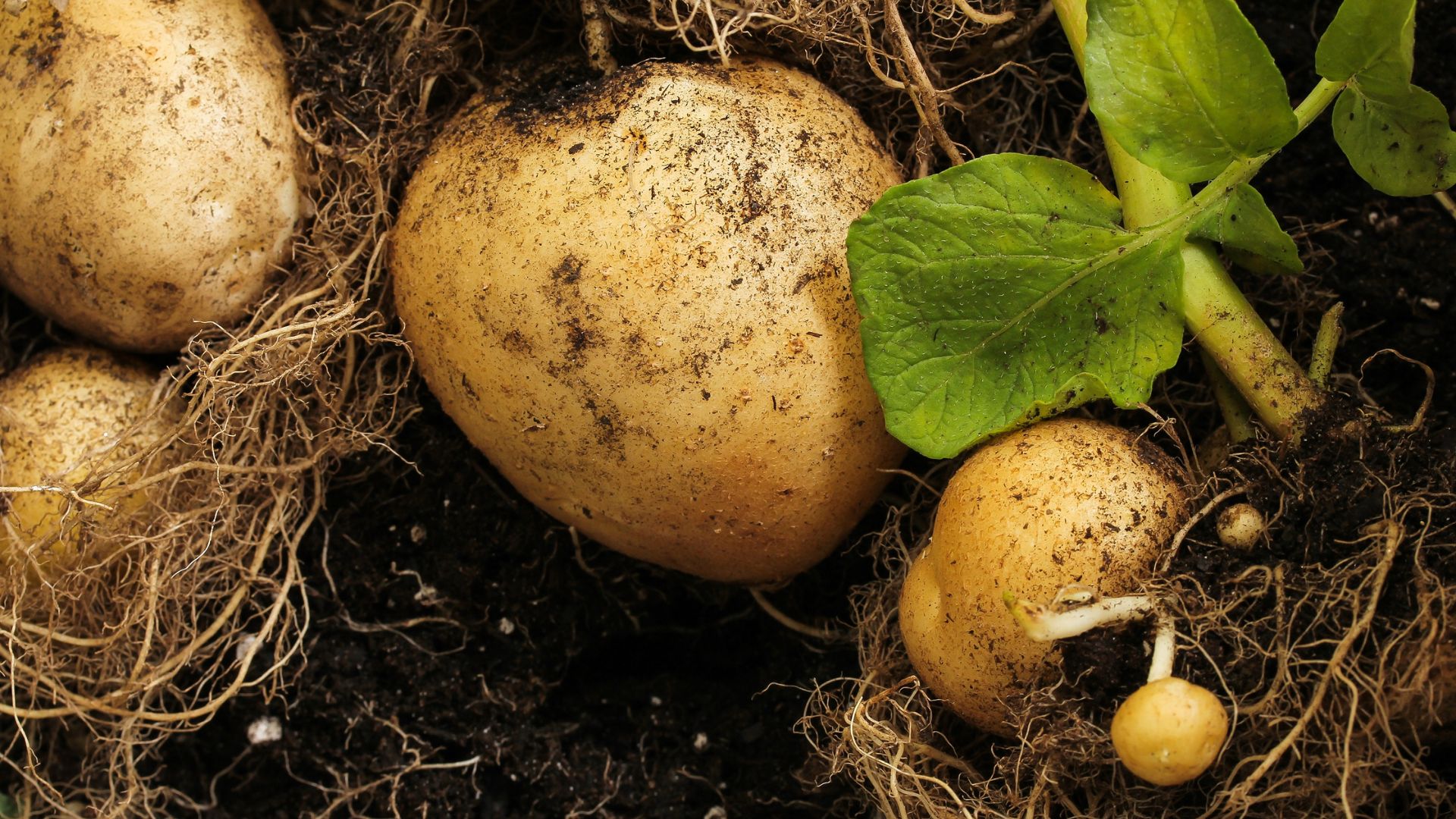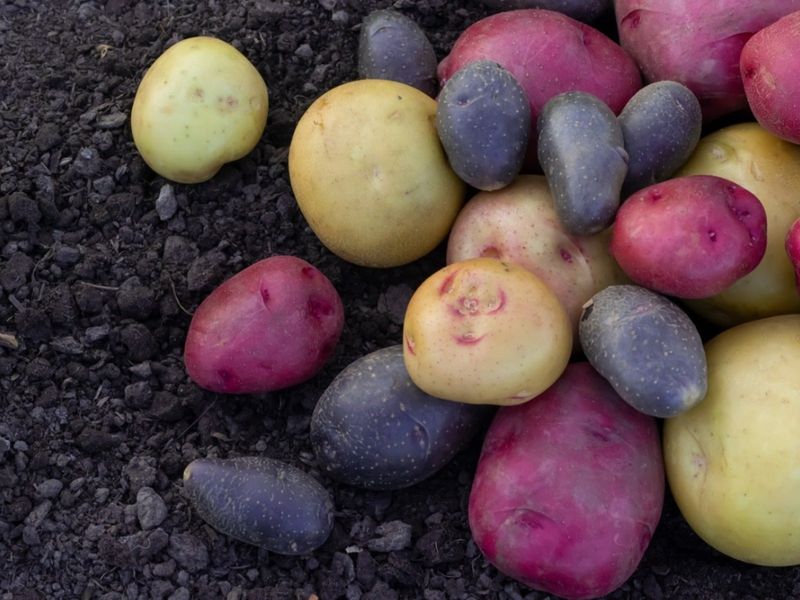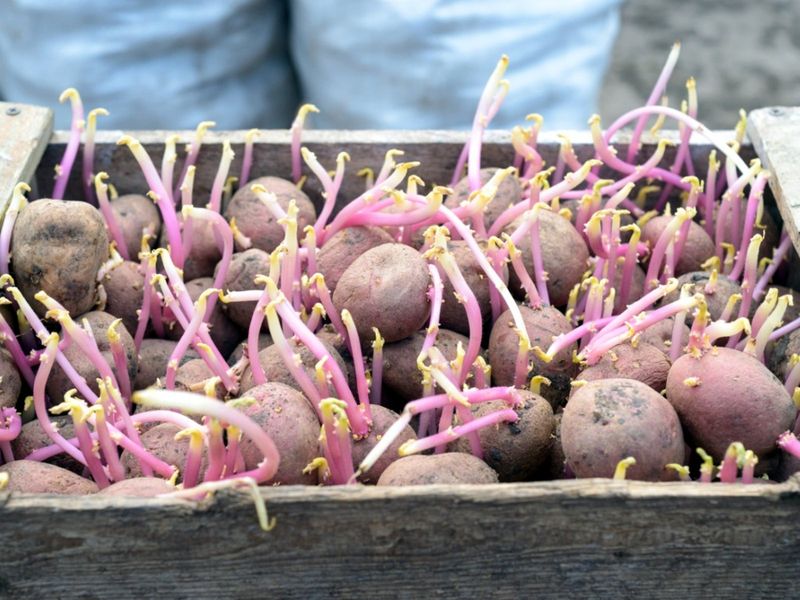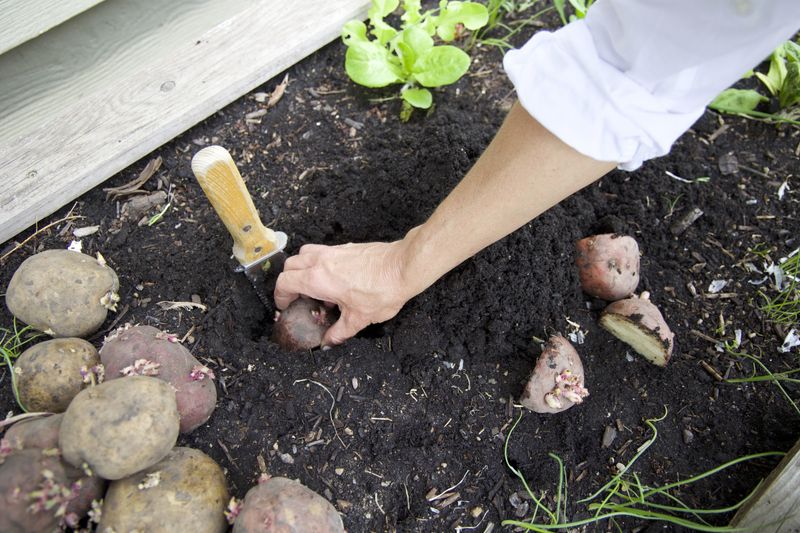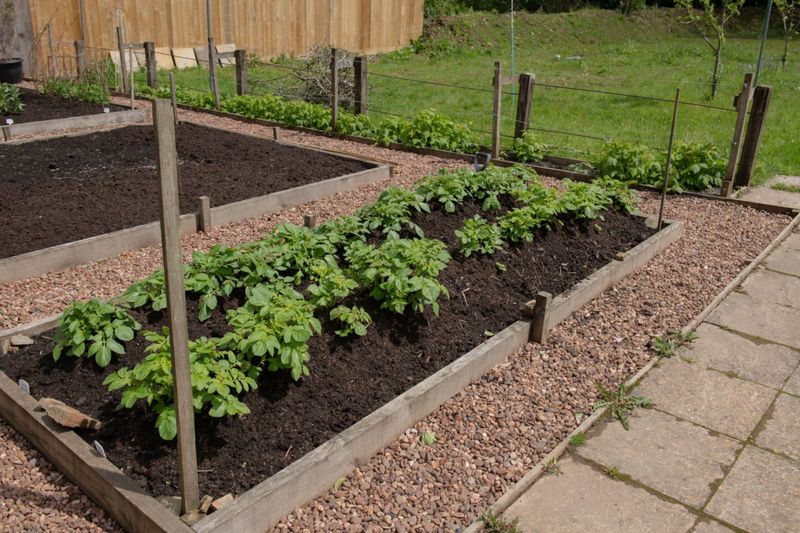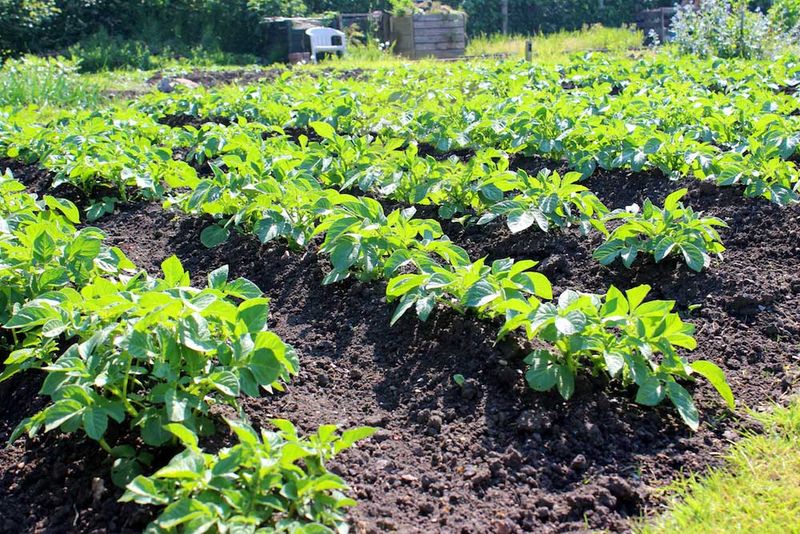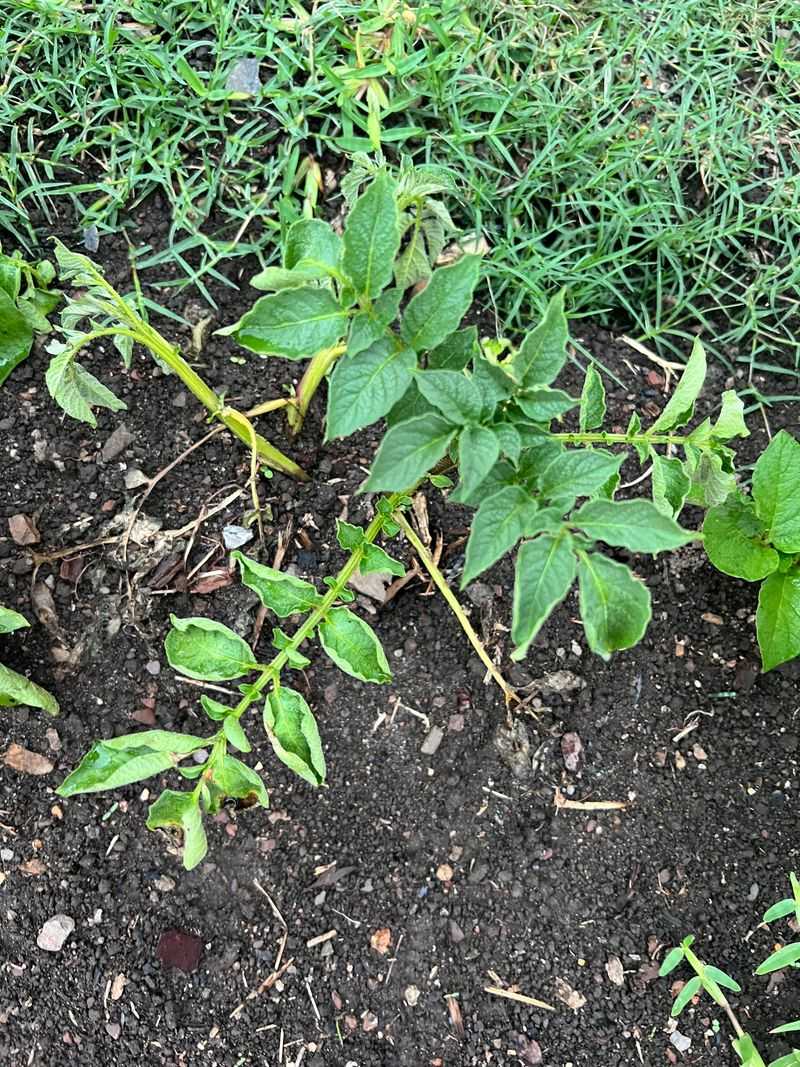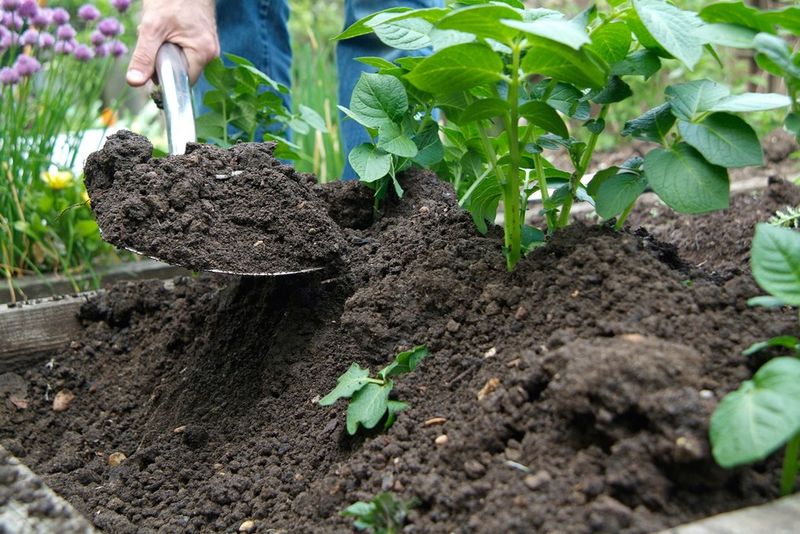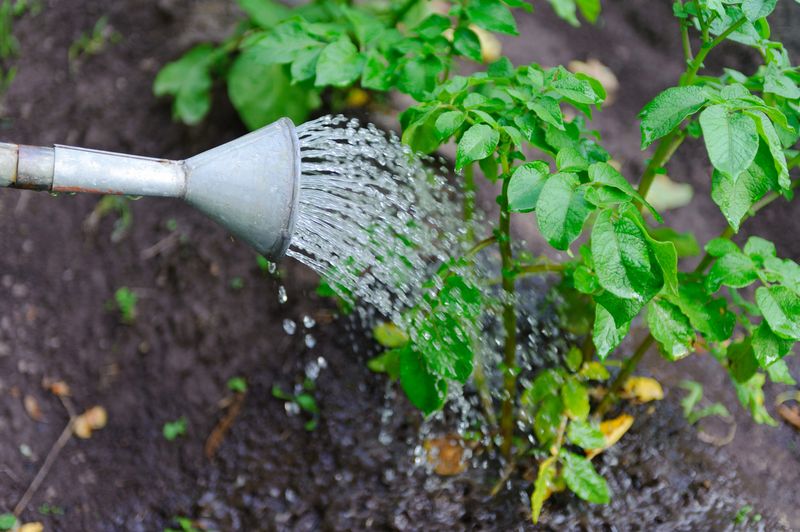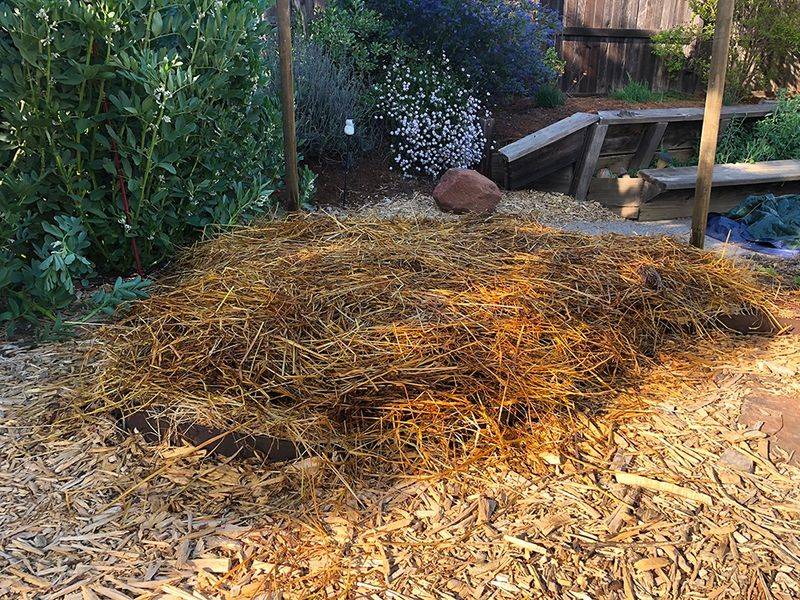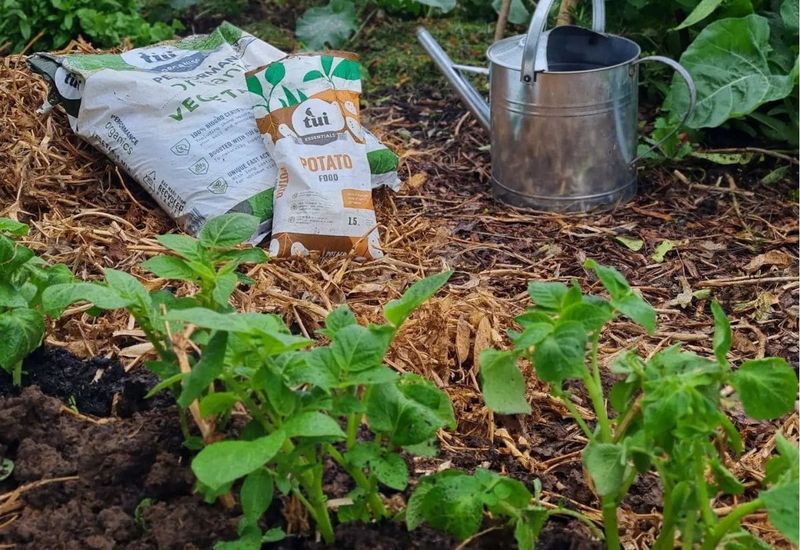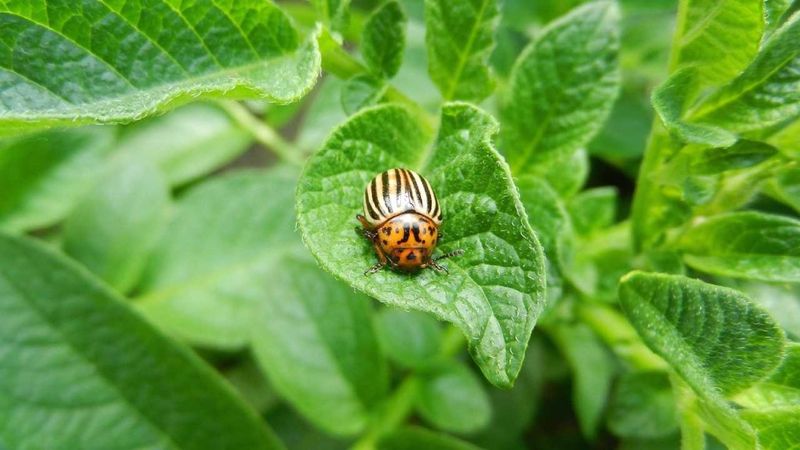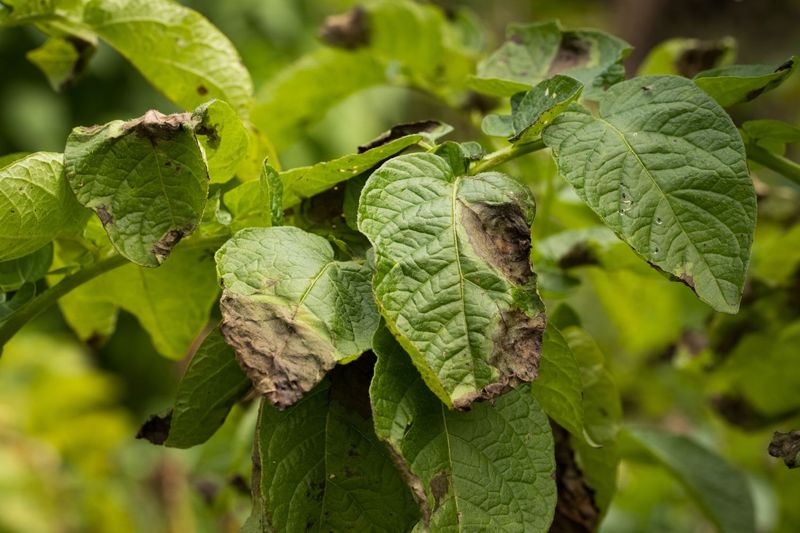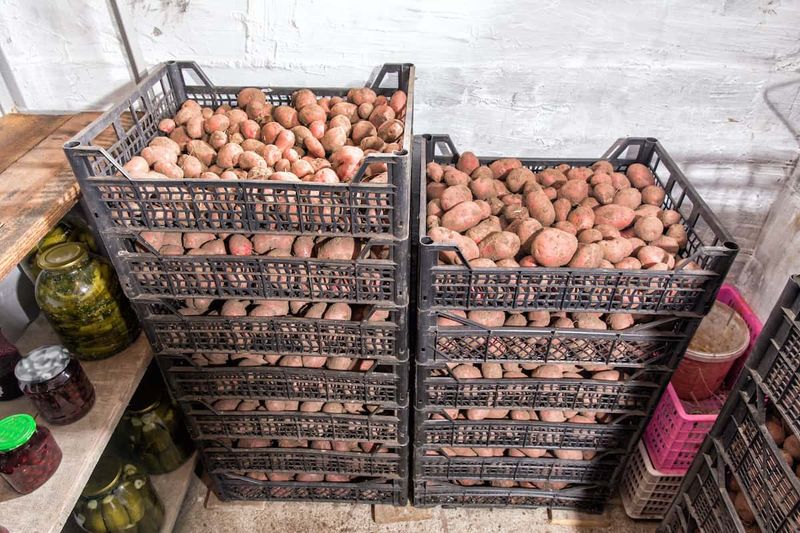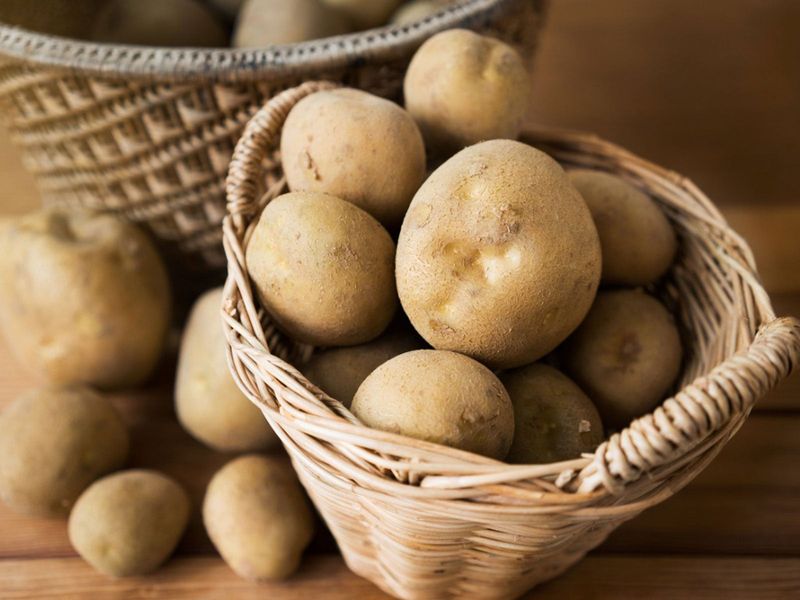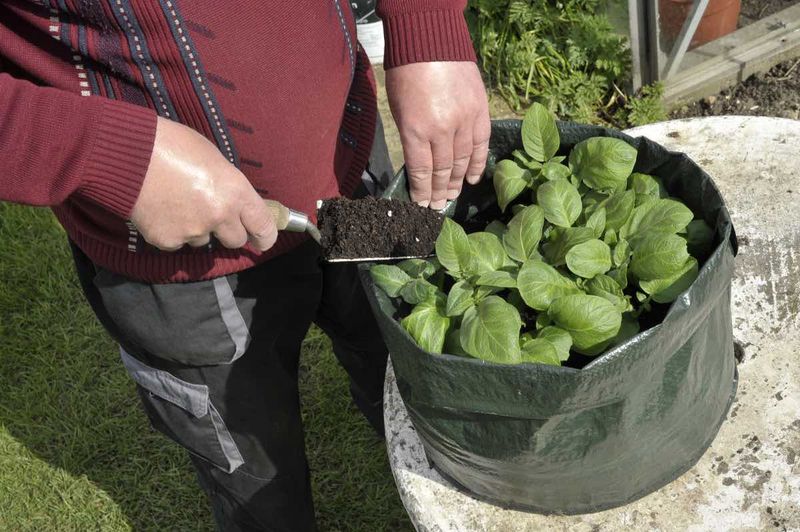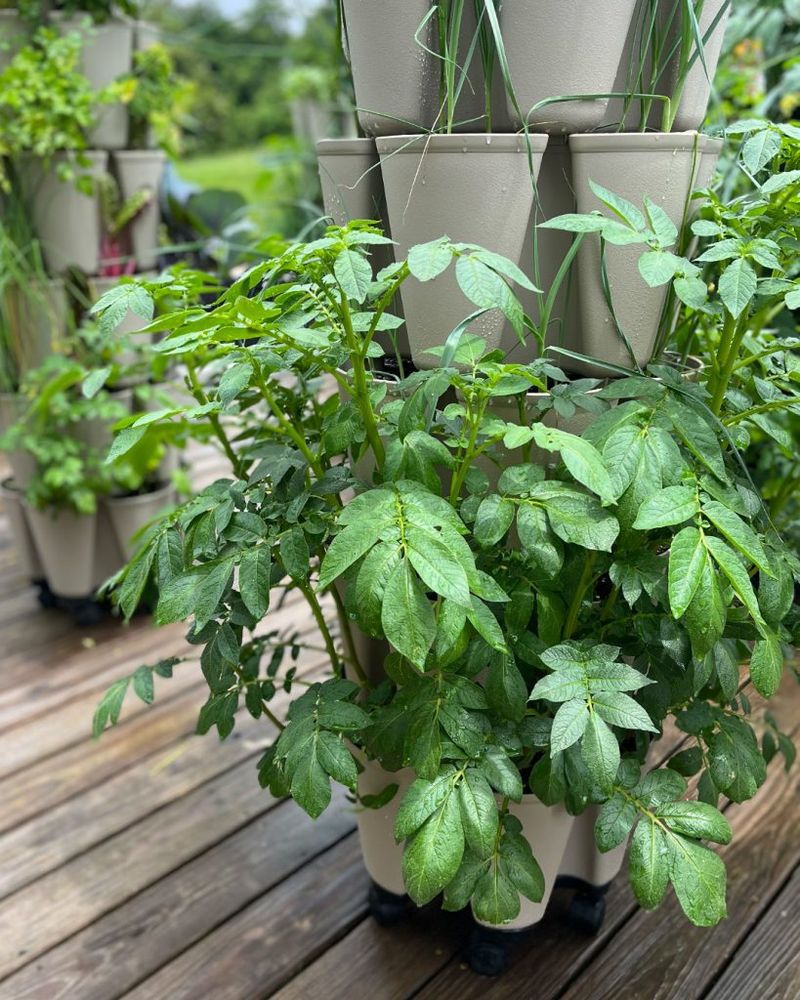Potatoes are a versatile and staple crop in many gardens. Yet, getting big yields can sometimes seem challenging. If you’re aiming for a bumper harvest this season, these 18 unique hacks will guide you to success.
From selecting the right potato varieties to innovative planting techniques, this will equip you with the knowledge to grow plump and healthy potatoes.
Whether you’re a novice gardener or a seasoned pro, these tips are practical and easy to implement. Let’s explore how you can transform your potato patch into a thriving source of delicious tubers.
1. Choose The Right Variety
Selecting the right potato variety can be a game changer. Each variety has unique characteristics that may suit certain climates or soil types better. Consider disease resistance and growth habits to find a fit for your garden.
For instance, some varieties are more drought-resistant, while others may thrive in cooler climates. Experiment with different types to see which one performs best in your area. You might discover that a lesser-known variety suits your needs perfectly.
Research local gardening forums and connect with other gardeners to find out which varieties perform well in your region.
2. Use Certified Seed Potatoes
The foundation of a successful potato crop starts with using certified seed potatoes. These seeds are free from diseases and pests, ensuring a healthy start.
Unlike grocery store potatoes, certified seeds are specifically grown to be robust and productive. This investment can lead to larger, healthier yields.
By choosing certified seed potatoes, you eliminate common problems associated with disease and give your plants the best chance to thrive. Look for local suppliers who provide high-quality seed potatoes for the best results.
3. Prepare The Soil Carefully
Soil preparation is key to growing healthy potatoes. Start by turning over the soil and removing rocks, debris, and weeds. A loamy, well-draining soil is ideal.
Incorporate organic matter such as compost or well-rotted manure to enrich the soil. This adds nutrients and improves drainage, creating the perfect environment for potato growth.
Proper soil preparation helps roots penetrate deeply, leading to stronger plants and better yields. Test your soil’s pH and adjust it between 5.0 and 6.5 for optimal growth.
4. Plant Potatoes In Raised Beds
Growing potatoes in raised beds can enhance drainage and soil quality. It allows for better control over soil conditions, making it easier to manage nutrients and moisture levels.
Raised beds warm up quicker in the spring, providing a head start for your potato plants. This method is especially beneficial in regions with heavy or clay soils.
By elevating your garden, you can avoid soil compaction and improve aeration, leading to healthier plants and a more abundant harvest. Consider using untreated wood or recycled materials for your raised beds.
5. Space Plants Adequately
Proper spacing is essential for optimal potato growth. Crowded plants compete for nutrients and sunlight, leading to smaller yields.
Space your plants about 12 inches apart in rows, with rows 2 to 3 feet apart. This allows each plant room to expand and access essential resources.
By giving your potatoes space, you enable them to grow larger, healthier tubers. This practice also aids in disease prevention, as better air circulation reduces moisture buildup.
6. Practice Crop Rotation
Crop rotation is a tried-and-true method to prevent soil depletion and disease. Avoid planting potatoes in the same spot year after year. Rotate them with legumes or leafy greens.
This practice helps break the cycle of pests and diseases that may linger in the soil. It also maintains soil fertility by diversifying the crops grown.
By rotating your potato crops, you create a healthier garden ecosystem, leading to more robust plants and higher yields. Plan your garden layout with future rotations in mind for long-term success.
7. Hill Up Soil Around Plants
Hilling is an essential practice that encourages larger potato tuber growth. As plants grow, gently mound soil around the stems.
This process protects developing tubers from sunlight, preventing them from turning green and becoming inedible. Hilling also supports plant stability and increases yield.
Perform this task every few weeks during the growing season for best results. The added soil layer not only shields tubers but also provides more space for them to expand.
8. Water Wisely And Consistently
Consistent watering is vital for healthy potato plants. They require about 1-2 inches of water per week, especially during flowering.
Water deeply, but avoid overwatering, which can lead to rot. Morning watering is preferable to minimize evaporation.
Monitor rainfall and adjust your watering schedule accordingly. Install a drip irrigation system for efficient moisture management, ensuring your potatoes receive the right amount of water throughout their growth.
9. Mulch To Retain Moisture
Mulching is a simple yet effective way to conserve soil moisture and suppress weeds. Use organic materials like straw or grass clippings to cover the soil around potato plants.
This layer retains moisture, keeping the soil temperature consistent and preventing weed growth that competes for nutrients.
Mulching also protects tubers from direct sunlight, reducing the risk of them turning green. Regularly check the mulch layer and replenish it as needed to maintain its benefits.
10. Fertilize At Critical Stages
Fertilizing potatoes at the right time ensures robust growth and high yields. Start with a balanced fertilizer at planting time.
As plants begin to bloom, apply a side dressing of nitrogen-rich fertilizer to encourage tuber development. Avoid over-fertilizing, which can lead to excessive foliage growth at the expense of tubers.
Understanding your soil’s nutrient needs is key to effective fertilization. Regularly test soil and adjust your fertilizer strategy to keep plants healthy and productive.
11. Control Pests Naturally
Keeping pests at bay is crucial for potato health. Opt for natural methods like companion planting with marigolds or garlic to deter common pests.
Hand-picking beetles or using organic sprays can also be effective without harming beneficial insects. Maintaining a clean garden by removing debris reduces pest habitats.
By focusing on natural pest control, you preserve your garden’s ecosystem, supporting healthy plant growth and maximizing yields.
12. Prevent Diseases Proactively
Disease prevention starts with choosing resistant varieties and practicing crop rotation. Keep foliage dry by watering at the base.
Remove infected plants promptly to prevent the spread of diseases like blight. Organic fungicides can provide additional protection if needed.
Staying vigilant and proactive with disease prevention measures ensures a healthy crop. Regularly inspect plants for signs of disease and take swift action to keep your potatoes thriving.
13. Harvest At The Right Time
Harvesting potatoes at the right time ensures maximum flavor and storage potential. Wait until the foliage has died back, indicating maturity.
Gently lift tubers with a fork to avoid damage. Early-harvested new potatoes offer tender taste, while mature ones store longer.
Timing your harvest perfectly enhances both yield and quality. Enjoy the fruits of your labor by savoring freshly dug potatoes or storing them for later use.
14. Cure Potatoes Before Storage
Curing potatoes before storage is essential for long-term preservation. Place harvested potatoes in a dark, well-ventilated area for about two weeks.
This process allows skins to thicken and small wounds to heal, preventing rot during storage. Keep temperatures cool and humidity moderate.
Proper curing enhances storage life and flavor, ensuring you enjoy your harvest well into the season. Handle tubers gently and monitor conditions for the best results.
15. Store Potatoes Properly
Proper storage ensures your potatoes remain fresh and edible for months. Choose a cool, dark place with good ventilation, such as a cellar.
Avoid storing potatoes near onions, as they emit gases that can spoil each other. Regularly check stored potatoes for signs of spoilage.
By following these storage guidelines, you’ll extend the shelf life of your harvest and enjoy your potatoes long after the growing season ends.
16. Try Container Gardening
Container gardening offers a versatile solution for growing potatoes in small spaces. Use large containers with drainage holes, filled with quality potting mix.
Plant potatoes deeply and add soil as plants grow, mimicking the hilling process. Containers can be moved to optimize sunlight and protect from harsh weather.
This method allows urban gardeners to enjoy fresh potatoes without a traditional garden plot. Experiment with different container types to find what works best for you.
17. Experiment With Vertical Growing
For those with limited space, vertical growing offers an innovative solution. Stack pots or use grow bags to create a vertical garden.
This method maximizes space and allows for easy access and maintenance. As plants grow, add more soil or compost to support tuber development.
Vertical growing not only saves space but can also enhance aesthetics in your garden. It’s a fun and efficient way to cultivate potatoes, especially in urban settings.
18. Understand Timing And Seasons
Understanding the timing and seasons is critical for a successful potato crop. Planting too early can risk frost damage, while too late may miss optimal growth conditions.
Familiarize yourself with your local climate and soil temperature requirements. Potatoes prefer cooler weather and should be planted 2-3 weeks before the last frost date.
By aligning your planting schedule with seasonal patterns, you’ll set your potatoes up for success. This knowledge helps avoid common pitfalls and maximizes your yields.

